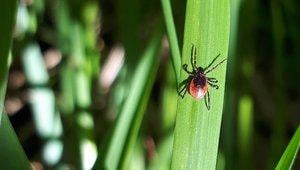MOOC List is learner-supported. When you buy through links on our site, we may earn an affiliate commission.

MOOC List is learner-supported. When you buy through links on our site, we may earn an affiliate commission.
About 25% of annual deaths worldwide are related to infectious diseases and 23% of them are directly related to vector-borne diseases. Vector-borne diseases have a zoonotic origin meaning that the pathogen is transmitted from animals to humans. Pathogens such as bacteria, parasites and viruses are primarily maintained within an enzootic cycle between populations of non-human primates or other mammals and zoophilic vectors. This “wild” cycle sometimes spills over with infections of humans and domestic animals. Lifestyle changes, incursions by humans into natural habitats, and changes in agropastoral practices create opportunities that make the borders between wildlife and humans more permeable. Some vector-borne diseases have dispensed with the need for amplification in wild or domestic animals before being transmitted to humans. The design of control strategies for vector-borne diseases should be guided by research in emergence mechanisms in order to understand how a wild cycle can produce a pathogen that goes on to cause devastating urban epidemics.
The MOOC “Medical entomology” aims at providing the understanding in medical and veterinary entomology at the university level. It will teach the role of vectors in the functioning of ecosystems and, in a lot of cases, how to interrupt the vector transmission chain. It is organized from an entomological perspective, with each session devoted to a particular taxonomic group of insects and ticks.
What you will learn
At the end of this course, you will be able to:
- know what is medical entomology,
- learn how do the most fearsome arboviral diseases be transmitted by tiny little insects,
- discover what are our natural alliances against the transmission.
Format
This MOOC is organized in 6 weeks of 3-6 sequences. Each sequence is composed of a 10 minutes video and a multiple choice test to help students check their understanding. The videos are in English, subtitled in French and English. All the tests are in English.
The MOOC students are invited to actively interact with the teaching team and the other students through the forum and during live stream hangouts.
Course syllabus
Week 1: Introduction to medical entomology
- Arthropods of medical and veterinary importance
- Orientation towards hosts in hematophagous insects
- Hematophagy and transmission of pathogens
- Genetic and Environmental determinants of vector-pathogen interactions
- Vector-parasite interactions: what is a population & why do we care
- Insecticide resistance in insect vectors
Week 2: Mosquitoes and Arboviruses
- Zika, the new threat
- Dengue fever
- Yellow fever
- Chikungunya, vector change and emergence
- Infection by West-Nile virus
- Natural history of Rift Valley fever
Week 3: Insect vectors and Parasites
- History of malaria control strategies, a cycle of euphoria and apathy?
- The global malaria strategy
- Population genetics of Malaria vectors
- Tsetse flies and African trypanosomiasis
- Triatominae and Chagas disease
Week 4 - Other insects and related pathogens
- Culicoides biting midges and transmission of Blue tongue
- Fleas and plague
- Black flies and onchocerciasis
- Ticks: biology, medical and veterinary importance
- Phlebotomine sandflies
- Role of sand flies in the transmission of arboviruses
Week 5: New methods and concepts to approach vector-borne diseases
- Mathematical modelling of epidemics
- Emerging and Re-emerging viruses, what did we learn?
- RNA virus, genetic variability and evolution
Week 6: Insect immunity, microbiome and miscellaneous
- Skin interface and arthropod borne diseases
- RNAi-mediated antiviral immunity in insects
- Importance of the insect microbiome in vector adaptation and pathogen transmission
MOOC List is learner-supported. When you buy through links on our site, we may earn an affiliate commission.
MOOC List is learner-supported. When you buy through links on our site, we may earn an affiliate commission.
